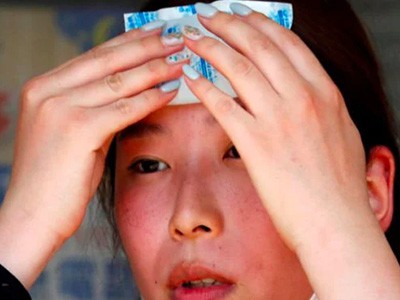26 May 2023
•3 minute read
Why You Shouldn’t Play it Cool When it Comes to Heatstroke
This serious and life-threatening condition occurs when the body’s temperature regulation system is overwhelmed by heat.
The recent deaths of two children in Kelantan from heatstroke has prompted the health ministry to send out warnings, driving home the fact that Malaysia’s high temperatures cannot be taken lightly.
A serious medical condition that requires immediate attention, heatstroke occurs when the body’s temperature regulation system is overcome by heat. Symptoms may include:
- A high body temperature above 40°C;
- Rapid heartbeat;
- Rapid or laboured breathing;
- Headache, dizziness or lightheadedness;
- confusion or disorientation;
- Nausea or vomiting;
- Seizures; and/or
- Loss of consciousness.
Emotional sensations such as anxiety and agitation, and a sense of being overwhelmed can also occur due to the body’s response to high temperatures. Failure to treat heatstroke could lead to organ damage or be fatal.
That said, it can sometimes be difficult to differentiate between someone who is simply hot and sweaty, and someone who is experiencing heat exhaustion.
With the latter, one’s body temperature typically rises above 40°C. The skin might feel dry and hot, causing sweating to stop altogether.
In contrast, those who are merely exerted usually continue to perspire, and are unlikely to experience the symptoms above.
Treatment and severity
In mild cases, heatstroke is often treated effectively through rest and rehydration. The individual usually recovers without any long-term effects.

But in more severe instances, damage to the body’s organs and tissues can be permanent, leading to long-term health complications. For example, heatstroke could cause damage to the brain, resulting in cognitive impairment, memory problems, and difficulties with coordination and movement.
It may also cause damage to the kidneys, liver, and heart, leading to organ failure and other serious complications.
The duration of sun exposure that leads to heatstroke varies depending on factors such as the overall temperature and humidity, as well as the individual’s age, health, and physical wellbeing.
There is no set amount of time for how long someone needs to be out in the sun to get heatstroke. It could develop within just a few hours of exposure to high temperatures and humidity, especially if the person is performing strenuous activity.
As some individuals may be more susceptible than others, it’s crucial to take precautions such as wearing light clothing, using umbrellas or taking breaks in shaded or cool areas, and drinking lots of water.

Indoor risks
Heatstroke can occur indoors, too, especially during extended periods when the outdoor temperature is very high. Indoor temperatures can rise to the point that it is equal or greater than outside, especially in buildings with poor ventilation or no air conditioning.
As such, individuals who spend prolonged periods indoors – especially the elderly, infants, and those with chronic health conditions – are also at risk of heatstroke. In large cities, those who live in high-rise buildings with inadequate ventilation and no air conditioning are vulnerable during heatwaves.
Furthermore, certain indoor activities, such as cooking in a hot kitchen, using hot tubs or saunas, or working in high-temperature environments, increase the risk of heat exhaustion.
To avoid heatstroke while indoors, use fans or air conditioning, or open windows to increase ventilation. Do note, however, that the latter could result in hot air from outside coming into the room.
Again, wear appropriate clothing, try to keep cool by using a cold compress, and stay hydrated by drinking plenty of fluids even if you don’t feel thirsty.
This article first appeared in Free Malaysia Today, 9 May 2023.
Share:
Was this article helpful?
26 May 2023
•3 minute read
Why You Shouldn’t Play it Cool When it Comes to Heatstroke
Articles and Video
Learn more about Emergency Medicine in Columbia Asia
Learn MoreShare:
Was this article helpful?
Health Packages
Elevate your health with tailored health packages at Columbia Asia Hospital. Take charge of your health journey today.

